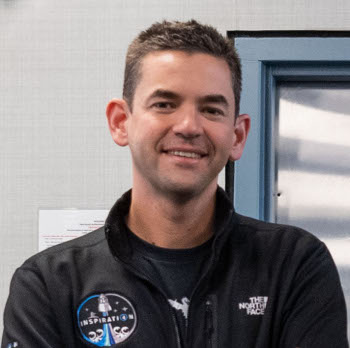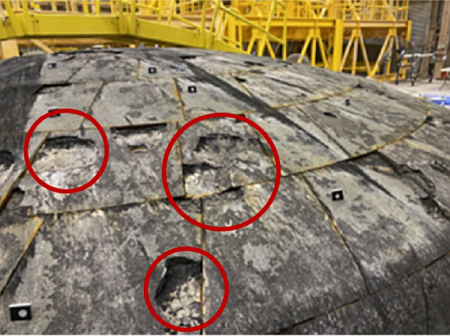“Blemish” on Orion hatch’s “thermal barrier” delays countdown rehearsal
According to a report yesterday, a countdown rehearsal two weeks ago for the Orion/SLS stack that also included the four astronauts to fly on the next mission was delayed because a “blemish” was found on the Orion hatch “thermal barrier.”
“Prior to the countdown demonstration test, the agency had planned to conduct a day of launch closeout demonstration. This demonstration was paused when a blemish was found on the crew module thermal barrier, preventing hatch closure until it could be addressed,” the statement read. “A repair was completed on Nov. 18 allowing the closeout demo to successfully complete on Nov. 19. To allow lessons learned from the closeout demo to be incorporated into the planning for the countdown demonstration test, the decision was made to proceed into water servicing next and place the countdown demonstration test after this servicing completes.”
It was not clear from the NASA statement how a ‘blemish’ prevented the closure of the hatch and NASA would not say exactly when the countdown rehearsal will take place. Declining to provide further details, the space agency spokesperson said: “NASA remains on track to launch Artemis 2 no later than April 2026 with opportunities to potentially launch as soon as February.”
NASA released no additional details, though it claimed this delay will have no impact on the launch schedule for the Artemis-2 mission, planned for launch no later than April 2026.
The lack of detailed information from NASA is disturbing. What was the “blemish?” It appears it was on the rubber gaskets that circle the hatch’s edge. What caused it? Was it some damage? A production flaw? NASA’s general silence forces us to consider more serious possibilities.
I continue to pray that these four astronauts are not going to end up as sacrificial lambs to the political scheduling demands that is forcing NASA to push on blindly, as it did with both the Challenger and Columbia failures, ignoring or minimizing issues that common sense should never be minimized.
According to a report yesterday, a countdown rehearsal two weeks ago for the Orion/SLS stack that also included the four astronauts to fly on the next mission was delayed because a “blemish” was found on the Orion hatch “thermal barrier.”
“Prior to the countdown demonstration test, the agency had planned to conduct a day of launch closeout demonstration. This demonstration was paused when a blemish was found on the crew module thermal barrier, preventing hatch closure until it could be addressed,” the statement read. “A repair was completed on Nov. 18 allowing the closeout demo to successfully complete on Nov. 19. To allow lessons learned from the closeout demo to be incorporated into the planning for the countdown demonstration test, the decision was made to proceed into water servicing next and place the countdown demonstration test after this servicing completes.”
It was not clear from the NASA statement how a ‘blemish’ prevented the closure of the hatch and NASA would not say exactly when the countdown rehearsal will take place. Declining to provide further details, the space agency spokesperson said: “NASA remains on track to launch Artemis 2 no later than April 2026 with opportunities to potentially launch as soon as February.”
NASA released no additional details, though it claimed this delay will have no impact on the launch schedule for the Artemis-2 mission, planned for launch no later than April 2026.
The lack of detailed information from NASA is disturbing. What was the “blemish?” It appears it was on the rubber gaskets that circle the hatch’s edge. What caused it? Was it some damage? A production flaw? NASA’s general silence forces us to consider more serious possibilities.
I continue to pray that these four astronauts are not going to end up as sacrificial lambs to the political scheduling demands that is forcing NASA to push on blindly, as it did with both the Challenger and Columbia failures, ignoring or minimizing issues that common sense should never be minimized.


